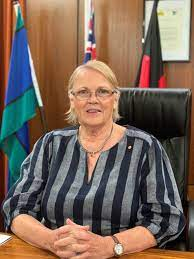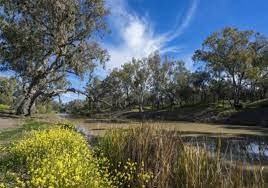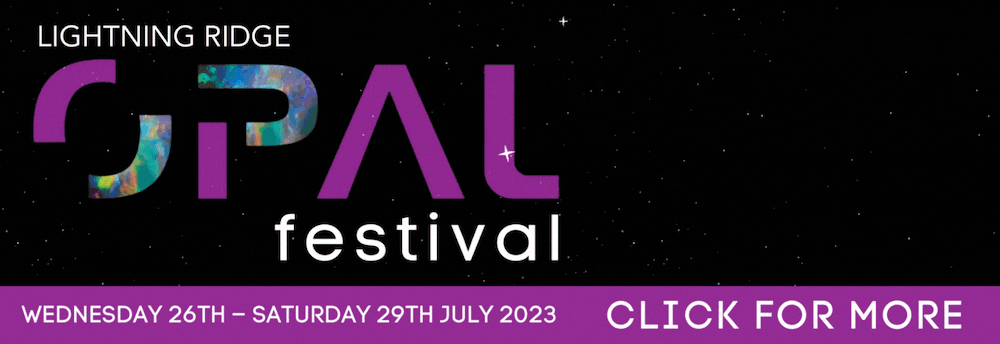Walgett back on bore water as solutions hard to find
Luke Williams
14 July 2023, 9:20 PM
 Image: ABC.
Image: ABC. Walgett has switched back to bore water as the Namoi River is running too low.
"It's not clear what the long-term option is," said Walgett Shire Mayor Jane Keir "We are back on bore water for the time being."
Walgett had been running on river water for more than a month before river levels ran so low for it could not be used as a water source.
In April, Aboriginal Community-Controlled Organisations (ACCOs) in Walgett called on the NSW Government to establish an independent, multi-agency taskforce to address what is called an "intolerable situation" where drinking water supplied to the town and surrounds is bore water - so high in sodium it poses a threat to community members with existing health conditions.
It follows a report from University of NSW (UNSW) experts and medical researchers from The George Institute for Global Health (TGI) have warned that the content of Walgett's water supply is 15 times higher in sodium than medical practitioners recommend for long-term consumption by people with severe hypertension or renal and heart issues.
Walgett began using river water on May 3 before the town’s water supply was switched back to bore water on 22 June.
"There is a lot of emotion involved. I am not sure what the solution is but I hope people understand that everyone involved is doing the very best they can," Mrs Keir said.

Walgett Shire Mayor Jane Keir
Over-extraction blamed as part of the problem
There are residents who say Walgett's water problems stem from over-extraction upstream of the town.
Maryanne Slattery was a director of the Murray–Darling Basin Authority for over a decade before becoming a director at Slattery and Johnson.
"The starting point is to ask whether a country town in NSW should have, as a minimal standard, drinkable water; the answer is yes."
"I find it outrageous that Walgett has to find its own solution for potable water when it is on the confluence of two major rivers. The people of Walgett having to try to organize it is ridiculous. They should be getting their water from the river," Slattery said.
"They have had their river taken away from them," she said. "They have got a lower allocation than all parts of irrigation upstream".

Maryanne Slattery. Image: ABC.
Slattery co-authored a study with a number of water experts that was published in the Australasian Journal of Water Resources last year:
"Water resources for irrigation in the Murray–Darling Basin have been heavily over-allocated," the article said and notes that while "The Murray–Darling Basin Plan is intended to return water from irrigated agriculture to the environment," it "requires comprehensive, accurate water accounting to achieve this objective" and "floodplain harvesting has resulted in the diversion of more water."
"There has been a huge growth in on-farm water storages upstream of Walgett; we did a satellite imaging study which showed us this. We did it from 1995 to 2020; there was an increase of 140% during that period".
"The growth in extraction is over the legal limit," Johnson said.
Murray-Darling Basin Plan at centre of Walgett's water woes
Mrs Keir agrees that the Namoi River is "over-extracted and over-licensed" but says all the Governments are working hard to rectify this.
"But you need to understand both points of view; these irrigators have millions and millions of dollars in their business. I also understand the environmental point of view."

Image: Walgett Shire Council.
But she disagrees that over-extraction is causing the lack of drinkable water in Walgett.
"I have lived in Walgett my whole life. What I know is that if Keepit Dam wasn't there, we would have no water. If we didn't have the dam and we didn't have the irrigators, we wouldn't have water in many instances. We all know about climate change, and what I am suggesting to you is that without Keepit Dam, that river would be dry again right now."
Last week Tanya Plibersek questioned whether Murray Darling Basin Authority can deliver the crucial Murray-Darling Basin Plan on time and may look at extending the deadline.
Despite 98 percent of the overall water recovery target already being met, some parts of the Plan need to catch up.
The Water Resource Plans for the Namoi system still need approval by the MDBA.
A spokesperson from the Australian Government, through the Department of Climate Change, Energy, the Environment and Water, told the Western Plains App, "It is currently working through the tender evaluation process for the current tender regarding strategic water rights purchasing of 44.3 gigalitres per year to deliver the Murray–Darling Basin Plan".
"All Australians should be able to expect access to safely managed drinking water."




